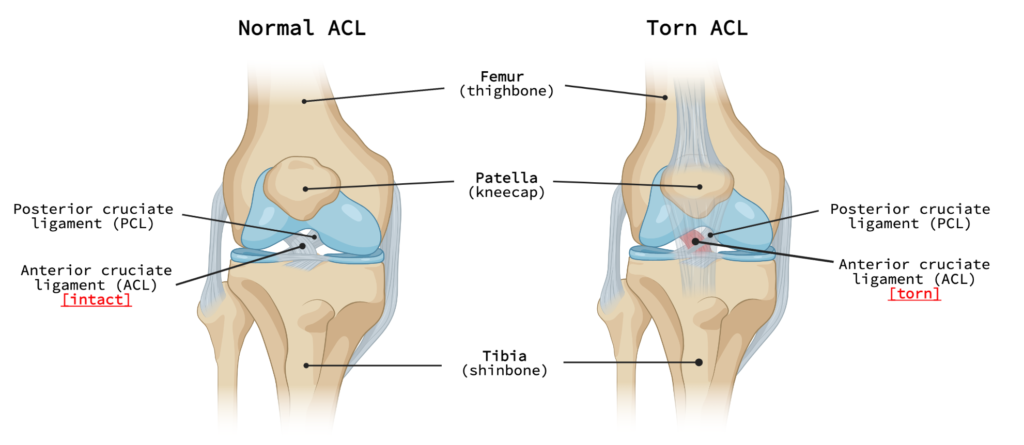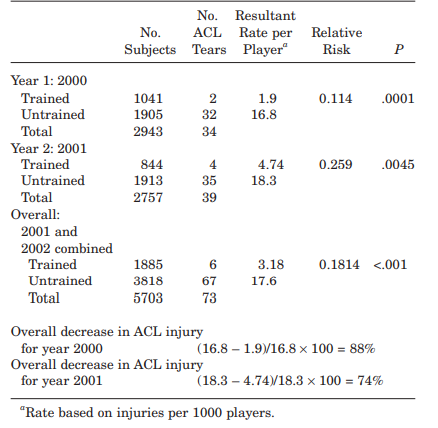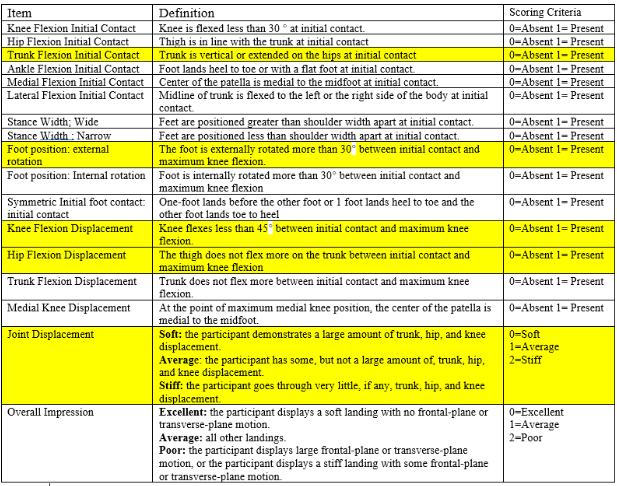
How and why are we introducing this injury prevention programme?
Dr. Mike Figurski (MD) has worked at his Big White clinic seeing thousands of patients from the neighbouring ski resort over the many years at his clinic. Most of his patients are recreational skiers attempting to ski and doing so incorrectly leaving them prone to life-changing injuries.
What if I’m not a skier or I’m not planning to ski in the future?
Knee injuries are very common in multiple sports and daily activities. Using our prevention program we aim to teach you applicable skills using neuromuscular balance training, strength training and improving spatial awareness.
Summary of Current Situation
The current incidence of anterior cruciate ligament injuries (ACL) is currently unknown. Comparisons of different incidence(s) prove to be difficult to compare and are often conflicting. However, it is estimated that there are 200,000-350,000 ACL injuries across North America. Athletes are that expose their limbs to over-extension or flexion are more prone to injury and rates that occur vary between the type of sport and sex. For example (1) females are 3.5-4 times as likely to sustain an ACL injury compared to males regardless of sport, (2) recreational skiers have the highest rate of injuries of any sport.
Injury prevention programs are classified into three main categories:
- Plyometrics
- Neuromuscular (Balance) Training
- Strength Training
An ACL injury prevention should incorporate exercises from all three categories and additional exercises tailored to the individual sport. The ACL prevention program should be incorporated or may even replace the “warm-up routine” for the sport.
The program will begin at a minimum of six weeks pre-season and continue throughout the season for maximum memory retention and transfer to neuromuscular movement. The program will be a minimum of 15-30 minutes and at least three days a week. However, the frequency and duration can vary and be altered for different age groups and or skill levels. The sample size will be large enough (over 1000 participants) to conduct statistical analyses that can yield significant results.
Common factors that are present in a successful ACL injury reduction programme:
- Age
- Biomechanics
- Compliance
- Dosage
- Feedback component
- Multicomponent –incorporates exercises from all the above categories. Studies have shown that the incorporation of exercises from only one category will not suffice to see a significant reduction in ACL injuries.
Internal vs External Focus
Most current ACL reduction programs use the internal focus method (or IF). This means participants watch a video or someone demonstrating proper technique once. Then, the participants mimic that individual by themselves by focusing on a specific muscle or bone. While this may prove effective in the short term, this is not the case in the long term. To maximize the acquisition and control of motor skills, we will incorporate external focus methods of instruction. Rather than the athlete focusing on a specific muscle or bone as they are doing the exercise. The video or instruction will be given simultaneously with the athlete doing the exercise
ENACTING AN EFFECTIVE INJURY REDUCTION PROGRAMME CAN REDUCE YOUR RISK OF INJURY UP TO 3-5 TIMES
Review of Knee Anatomy
The knee is a complex joint that flexes, extends and can twist from side to side. There are four major bones: (1) femur, (2) tibia (3) fibula (4) and the patella. There are two concave pads of cartilage called menisci that minimize friction. There are four key ligaments that support the knee during physical activity.
- Anterior Cruciate Ligament (ACL)
- Medial Collateral Ligament (MCL)
- Lateral Collateral Ligament (LCL)
- Posterior Cruciate Ligament (PCL)

OUR ACL PREVENTION PROGRAMME
- Part 1: Performance Enhancement Program (P.E.P) (with modification) – 20 minutes a day – 5 days a week for 3 weeks.
- Part 2: Watch a 30-40 minute situational awareness video at the start of the program, at the end of the program (pre-season) and once a month during the season.

Performance Enhancement Program (P.E.P) – Previous Testing
Mandelbaum et al. (2005) tested the effectiveness of this program in female soccer athletes between 14-18 years old over a period of two years. 1041 female subjects from 52 teams received the PEP training and 1905 female players from 95 teams were in the control group. This program replaced the warmups in the practices and games
RESULTS
Year 2000: There was an 88% reduction in ACL injuries in the trained group compared to the control.
Year 2001: There was a 74% reduction in ACL injuries in the trained group compared to the control.

Gilchrist et al. (2008) tested the P.E.P. program in a randomized control trial to prevent non-contact anterior cruciate ligament injury in female collegiate soccer players. There were 1435 athletes that participated in the study from 61 teams (852 control athletes, 583 intervention). There was a significant reduction in ACL injuries.

Situational Awareness Video – Previous Testing
Westin et al. (2020) tested the effect of ACL Injury Prevention videos on competitive Swedish alpine skiers that consisted of knee anatomy, incidence report and indoor/outdoor exercises. There were 305 athletes in the intervention group and 431 athletes in the control group. The videos were watched every 3 weeks from September to November (preseason) and once a month during the season from December to April. There was a significant reduction in ACL injuries (66%) in the intervention group compared to the control group.

Landing Error Scoring System (L.E.S.S)
LESS Method was previously validated using 2691 participants using a motion capture laboratory system and the inexpensive field analysis system called LESS. Each subject was analyzed simultaneously with both systems to determine validity (Padua et al. 2009).
Results: Subjects with high LESS scores (poor jump-landing technique) displayed significantly different lower extremity kinematics and kinetics compared with subjects with low LESS scores (excellent jump-landing technique). Women had higher (worse) LESS scores than men. Intrarater and interrater reliability of the LESS ranged from good to excellent
Conclusion: The LESS is a valid and reliable tool for identifying potentially high-risk movement patterns during a jump-landing task.
Landing Error Scoring System – The screening tool has been previously proven to be a reliable and valid measure to test for high-risk athletes when doing the jump drop-test exercise. The study has a total of 829 youth soccer athletes (348 boys and 481 girls) from two soccer leagues participated. Age ranges from `11 to 18 years old with 25% (207) being from 11 to 12 years old (Padua et al. 2015).
Results: There were 1217 injuries suspected of being an ACL injury or another type of injury. 7 ACL injuries were reported and confirmed to be ACL injuries. 6 female and 1 male. The average age of ACL injury was 15. Those who got ACL injury had a LESS score of 5 or greater.
Conclusion: The most predictive items were highlighted. Confirmation that it is a valid and reliable measure to identify high-risk athletes.
